
Accidents happen, and sometimes that means getting pen marks on your beautifully painted wood surfaces. Whether it’s a child’s artwork gone astray or an accidental slip of the pen, these marks can be frustrating to deal with. But fear not! There are several effective methods to remove pen marks from painted wood.
1. Rubbing Alcohol: This common household item can work wonders on removing pen marks. Simply dampen a cloth or cotton ball with rubbing alcohol and gently rub the affected area until the pen mark fades away. Rinse with water and pat dry.
2. Vinegar: Another versatile cleaning agent, vinegar can also be used to remove pen marks from painted wood. Mix equal parts vinegar and water, and then dab the mixture onto the pen mark using a cloth or sponge. Gently rub the area until the mark disappears, and then rinse with water and dry.
3. Baking Soda: Baking soda is known for its cleaning properties, and it can also be effective in removing pen marks from painted wood. Make a paste by mixing baking soda with water, and then apply it to the affected area. Gently scrub the mark with a soft cloth or sponge, and then rinse and dry.
4. Toothpaste: Toothpaste isn’t just for your teeth—it can also come in handy for removing pen marks from painted wood. Apply a small amount of non-gel toothpaste to the mark, and then gently scrub using a soft cloth. Rinse with water and pat dry.

Note: It’s important to test any cleaning method on a small, inconspicuous area of the painted wood before applying it to the pen mark. This will help ensure that the cleaning agent doesn’t cause any damage or discoloration.
With these effective methods, you can say goodbye to pen marks on your painted wood surfaces. Just remember to proceed with caution and take your time to gently remove the marks without damaging the paint.
Pen Mark Removal: Challenges and Solutions
Pen marks on painted wood can be a stubborn and unsightly problem to deal with. The challenge lies in removing the marks without damaging the painted surface underneath. Here, we will discuss some effective solutions to remove pen marks from painted wood.
1. Natural Solvents
Natural solvents such as rubbing alcohol, vinegar, or lemon juice can effectively remove pen marks from painted wood. Apply a small amount of the solvent onto a soft cloth and gently rub the pen mark in a circular motion. Be sure to test the solvent on a small, inconspicuous area first to ensure it doesn’t damage the paint.
2. Baking Soda Paste
Make a paste using baking soda and water. Apply the paste onto the pen mark and gently scrub it using a soft cloth or sponge. Rinse the area with clean water and dry it thoroughly. Baking soda has mild abrasive properties that can help lift stubborn pen marks without damaging the paint.
3. Toothpaste
Another effective solution for removing pen marks from painted wood is toothpaste. Apply a small amount of non-gel toothpaste onto a soft cloth and gently rub the pen mark. Rinse the area with clean water and dry it thoroughly. Toothpaste contains mild abrasives that can help remove the pen marks without harming the painted surface.
4. Magic Eraser
Magic erasers are a popular cleaning tool known for their ability to remove stubborn marks and stains. Wet the magic eraser and gently rub the pen mark on the painted wood. Make sure to test the magic eraser on a small, inconspicuous area first to ensure it doesn’t cause any damage.
5. Commercial Pen Mark Removers
If natural solvents and DIY solutions don’t work, you can try using commercial pen mark removers specifically designed for use on painted surfaces. These products usually come with instructions on how to use them safely. Follow the instructions carefully and test the product on a small area first before using it on the pen mark.
Remember, it’s essential to be gentle and cautious when removing pen marks from painted wood to avoid damaging the paint. Always test any solution or method on a small, inconspicuous area first before applying it to the pen mark.
Understanding Painted Wood Surfaces
Before attempting to remove pen marks from painted wood, it is important to have a good understanding of the surface you are dealing with. Painted wood surfaces can vary greatly in their composition, finish, and level of durability. Understanding these factors will help you choose the most effective methods for removing pen marks without causing further damage to the wood.
Composition

Painted wood surfaces can be made from a variety of materials, including solid wood, plywood, or MDF (medium-density fiberboard). Each type of wood can have a different reaction to cleaning agents and abrasives, so it’s important to identify the specific type of wood before proceeding with any removal methods.
Finish
The finish applied to the painted wood surface also plays a significant role in its durability and resistance to stains. Common types of wood finishes include varnish, lacquer, shellac, and paint sealers. Some finishes may be more susceptible to damage from cleaning agents or abrasive materials, so it’s important to choose the appropriate cleaning method for the specific finish on your painted wood surface.
Durability
The durability of a painted wood surface can vary depending on factors such as the thickness of the paint layer, the quality of the paint used, and any additional protective coatings or sealants applied. Highly durable surfaces can usually withstand more aggressive cleaning methods, while more delicate surfaces require a gentle approach to avoid damage.
Test First
Before applying any cleaning method to remove pen marks from painted wood, it is always recommended to test a small, inconspicuous area first. This will help you evaluate the effectiveness of the cleaning method and ensure that it does not cause any undesirable effects on the wood surface.
| Pen Mark Removal Methods | Description |
|---|---|
| 1. Mild Soap and Water | A gentle and safe method for removing pen marks from painted wood surfaces. Mix a few drops of mild soap with warm water, dampen a clean cloth, and gently rub the stained area. |
| 2. Rubbing Alcohol | Rubbing alcohol can effectively dissolve pen marks. Apply a small amount to a cloth and gently rub the stain until it disappears. Test a small area first to ensure it doesn’t damage the paint or finish. |
| 3. Magic Eraser | A magic eraser can be used to remove pen marks from painted wood surfaces. Wet the eraser and gently rub the stained area. Be careful not to apply too much pressure, as it can remove some of the paint or finish. |
Remember to always use a gentle approach and avoid harsh chemicals or abrasive materials that can cause damage to the painted wood surface. If the pen marks persist or you are unsure about the best method to use, consult a professional or seek advice from the manufacturer of the painted wood surface.
Types of Painted Wood Finishes
1. Matte Finish
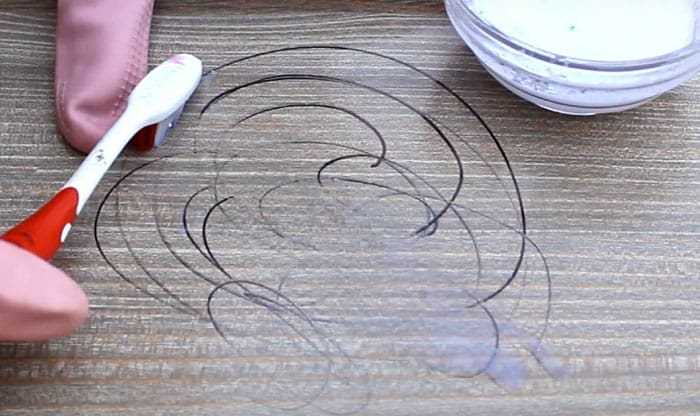
A matte finish is a type of painted wood finish that has a flat, non-glossy appearance. It is popular for giving a more natural and rustic look to the wood surface.
2. Satin Finish
A satin finish is a type of painted wood finish that has a slight sheen and a smooth, velvety appearance. It offers a low to medium level of gloss and is commonly used for both traditional and contemporary designs.
3. Gloss Finish
A gloss finish is a type of painted wood finish that has a high level of shine and reflective properties. It provides a smooth and lustrous appearance, making it ideal for creating a luxurious and elegant look.
4. Eggshell Finish
An eggshell finish is a type of painted wood finish that has a soft, subtle sheen similar to that of an eggshell. It offers a low to medium level of gloss and is popular for creating a smooth and refined look.
5. Semi-gloss Finish
A semi-gloss finish is a type of painted wood finish that has a moderate level of shine and reflects more light than a satin finish but less than a gloss finish. It provides a durable and easy-to-clean surface, making it suitable for high-traffic areas.
6. High-gloss Finish
A high-gloss finish is a type of painted wood finish that has an extremely high level of shine and creates a mirror-like effect. It offers a glamorous and dramatic appearance but requires regular maintenance to keep it looking its best.
7. Distressed Finish
A distressed finish is a type of painted wood finish that intentionally creates a worn and aged look. It involves techniques such as sanding, scratching, or applying a crackle medium to achieve a vintage or antique appearance.
8. Stained Finish
A stained finish is a type of painted wood finish that involves applying a stain to the wood surface, allowing the natural grain to show through. It enhances the natural beauty of the wood and provides a rich and warm look.
9. Weathered Finish
A weathered finish is a type of painted wood finish that replicates the effects of natural weathering over time. It gives the wood a rustic and aged appearance, adding character and charm to the overall design.
Common Methods to Remove Pen Marks from Painted Wood
1. Rubbing Alcohol
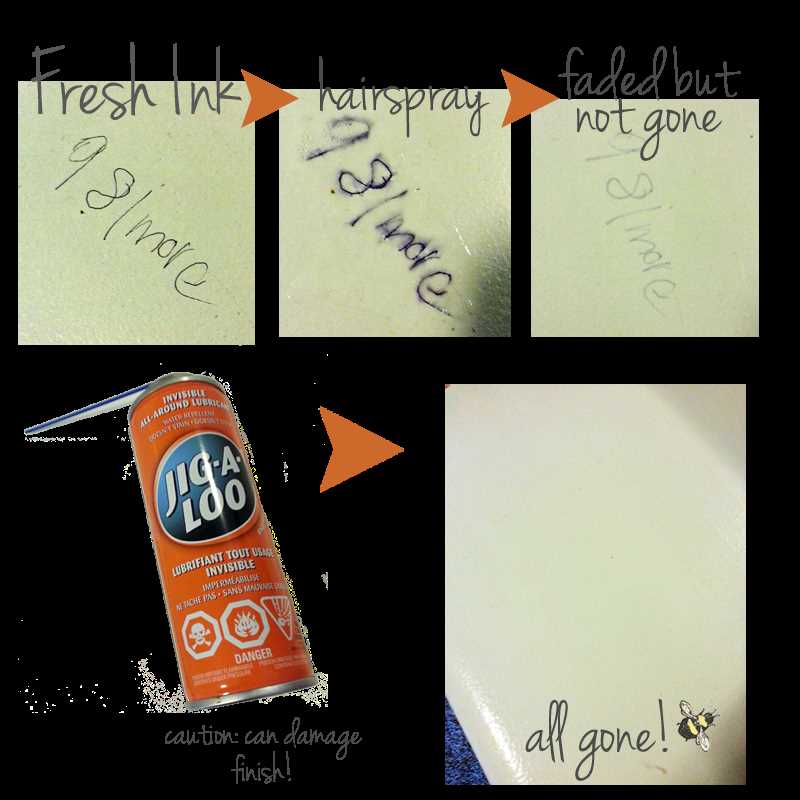
Gently dab a clean cloth or cotton swab with rubbing alcohol and blot the pen marks on the painted wood surface. Avoid excessive scrubbing, as it may damage the paint. Repeat the process until the pen marks are no longer visible.
2. Toothpaste
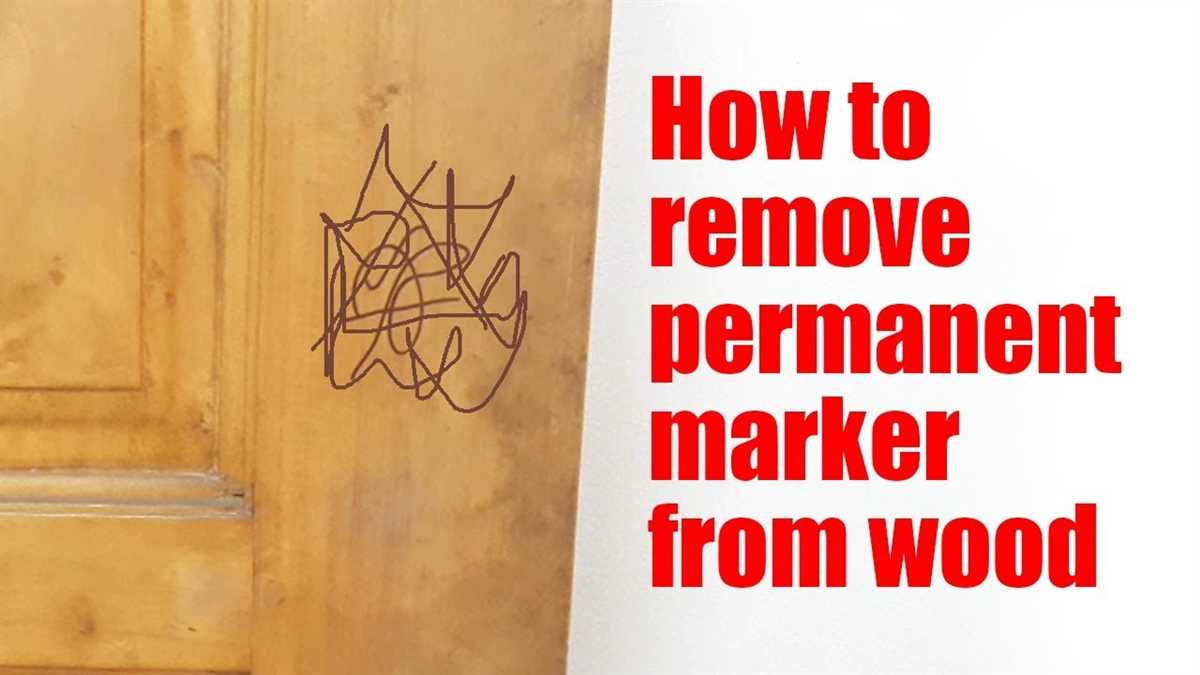
Apply a small amount of non-gel toothpaste to the pen marks on the painted wood. Using a clean cloth or toothbrush, gently scrub the toothpaste onto the surface in a circular motion. Rinse with water and wipe dry. Repeat the process if necessary.
3. Baking Soda
Create a paste by mixing baking soda with a small amount of water. Apply the paste onto the pen marks and gently scrub using a soft cloth or toothbrush. Rinse with water and wipe dry. Repeat the process if needed.
4. Olive Oil
Dab a small amount of olive oil onto a clean cloth and gently rub it onto the pen marks on the painted wood. Let the oil sit for a few minutes, then wipe it off with a clean cloth. Repeat the process until the pen marks are removed.
5. Magic Eraser
Moisten a magic eraser with water and gently scrub the pen marks on the painted wood surface. Rinse with water and wipe dry. Note that some magic erasers may be abrasive, so test it on a small inconspicuous area first to avoid any damage to the paint.
6. Dish Soap
Mix a small amount of mild dish soap with water to create a soapy solution. Dip a soft cloth into the solution and gently scrub the pen marks on the painted wood. Rinse with water and wipe dry. Repeat the process if necessary.
7. Acetone (Nail Polish Remover)
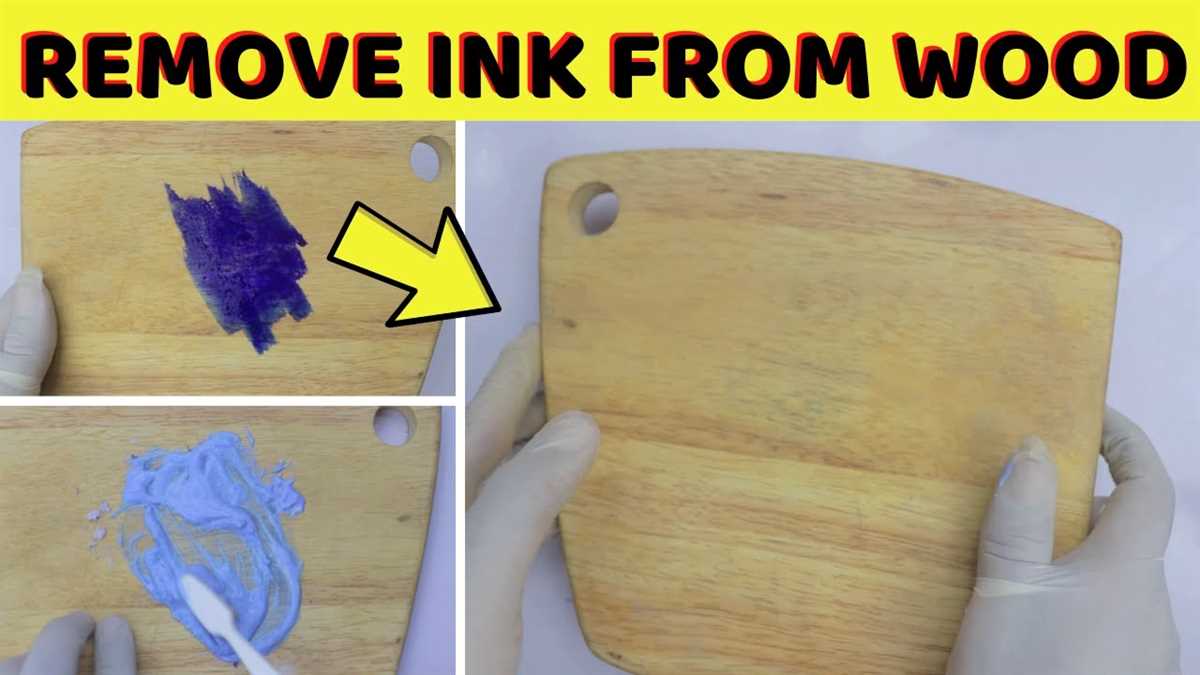
Apply a small amount of acetone (nail polish remover) onto a clean cloth and gently blot the pen marks on the painted wood. Avoid excessive rubbing, as it may damage the paint. Rinse with water and wipe dry. Repeat the process if needed.
8. Hairspray
Spray a small amount of hairspray onto a clean cloth and gently dab the pen marks on the painted wood. Blot the area with a dry cloth to remove any excess hairspray. Repeat the process until the pen marks disappear.
9. Commercial Cleaner
Use a commercial cleaner specifically designed for removing pen marks from painted surfaces. Follow the instructions on the product label and test it on a small inconspicuous area first to avoid any damage to the paint. Gently scrub the pen marks with the cleaner using a soft cloth or sponge, then rinse with water and wipe dry.
10. Prevention
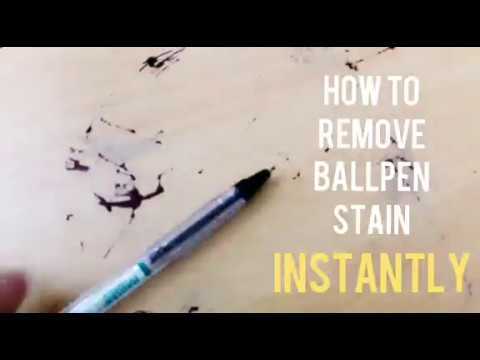
To prevent pen marks on painted wood surfaces in the future, consider using protective barriers such as coasters or desk pads. Encourage the use of pens with caps or retractable mechanisms to minimize the risk of accidental marks.
| Method | Description |
|---|---|
| Rubbing Alcohol | Dab with alcohol and blot pen marks. |
| Toothpaste | Apply non-gel toothpaste and scrub in a circular motion. |
| Baking Soda | Create a paste, apply, and scrub gently with a soft cloth or toothbrush. |
| Olive Oil | Apply olive oil and wipe off after a few minutes. |
| Magic Eraser | Moisten and gently scrub with a magic eraser. |
| Dish Soap | Mix with water, scrub gently, and rinse. |
| Acetone (Nail Polish Remover) | Blot with acetone and rinse. |
| Hairspray | Dab with hairspray and blot. |
| Commercial Cleaner | Use a specialized commercial cleaner according to instructions. |
| Prevention | Use protective barriers and encourage the use of pens with caps or retractable mechanisms. |
Rubbing Alcohol: A Versatile Pen Mark Remover
If you have discovered pen marks on your painted wood surfaces, don’t worry! Rubbing alcohol is an effective and versatile solution for removing these stubborn marks. It can be used on various types of painted wood, including furniture, cabinets, and doors.
Materials:
- Rubbing alcohol (isopropyl alcohol)
- Cotton balls or soft cloth
Steps:
- Dampen a cotton ball or soft cloth with rubbing alcohol.
- Gently rub the pen mark using the dampened cotton ball or cloth. Be sure to apply light pressure to avoid damaging the painted wood.
- If the pen mark persists, you can try using a scrub brush with soft bristles. Dip the brush in rubbing alcohol and gently scrub the mark in circular motions.
- Continue to rub or scrub until the pen mark is completely removed.
- Once the mark is gone, wipe the area with a clean, damp cloth to remove any residual alcohol.
- Allow the area to air dry completely before touching or using the painted wood surface.
Note: Rubbing alcohol is a powerful solvent, so it is important to test it on a small, inconspicuous area of the painted wood before using it on the pen mark. This will ensure that the alcohol does not damage or discolor the paint.
Preventive Measures:
- Keep pens and markers away from painted wood surfaces to avoid accidental marks.
- Use protective covers or placemats when working or eating on painted wood tables or surfaces.
- Regularly clean painted wood surfaces with a mild soap and water solution to prevent dirt and grime buildup, which can make pen marks more difficult to remove.
By following these simple steps and preventive measures, you can effectively remove pen marks from painted wood using rubbing alcohol. Remember to always test the alcohol on a small area first and proceed with caution to protect the integrity of your painted wood surfaces.
Natural Remedies to Remove Pen Marks from Painted Wood

If you have pen marks on your painted wood furniture or walls, you may be wondering how to remove them without causing damage. Luckily, there are several natural remedies that can effectively remove pen marks without the need for harsh chemicals.
1. Baking Soda
Baking soda is a versatile cleaning agent that can be used to remove pen marks from painted wood. Create a paste by mixing equal parts baking soda and water. Apply the paste to the pen marks and gently rub it in using a soft cloth or sponge. Rinse with water and repeat if necessary until the pen marks are gone.
2. Vinegar
Vinegar is another natural remedy that can help remove pen marks from painted wood. Mix equal parts vinegar and water in a spray bottle. Spray the solution onto the pen marks and let it sit for a few minutes. Use a soft cloth or sponge to gently scrub the marks away. Rinse with water and repeat if necessary.
3. Lemon Juice
Lemon juice is known for its natural cleaning properties and can be used to remove pen marks from painted wood. Squeeze fresh lemon juice onto a soft cloth or sponge and rub it onto the pen marks. Let it sit for a few minutes and then use a clean cloth or sponge to gently scrub away the marks. Rinse with water and repeat if necessary.
4. Toothpaste
Toothpaste can also be used as a natural remedy to remove pen marks from painted wood. Apply a small amount of non-gel toothpaste onto a soft cloth or sponge and rub it onto the pen marks. Gently scrub the marks until they are gone. Rinse with water and repeat if necessary.
5. Rubbing Alcohol

Rubbing alcohol is a common household item that can effectively remove pen marks from painted wood. Dampen a cloth or sponge with rubbing alcohol and gently rub the pen marks. The alcohol should dissolve the ink and remove the marks. Rinse with water and repeat if necessary.
Remember to always test any natural remedy on a small, inconspicuous area of the painted wood before applying it to the pen marks. This will ensure that the remedy does not damage or discolor the wood surface.
With these natural remedies, you can effectively remove pen marks from painted wood without the use of harsh chemicals. Always remember to test the remedy on a small area first and proceed with caution to protect the integrity of your painted wood surfaces.
Lemon Juice: A Citrus Solution for Pen Marks
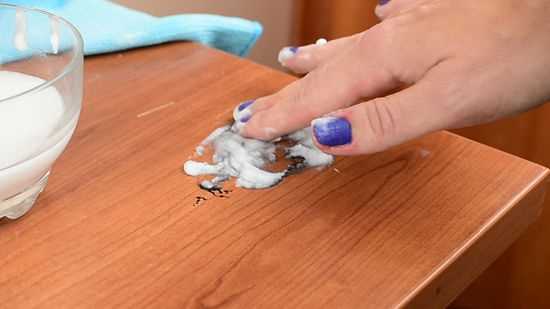
When it comes to removing pen marks from painted wood, lemon juice is an effective and natural solution. The citric acid in lemon juice works as a gentle bleach that helps lift the ink stains without damaging the painted surface.
How to remove pen marks using lemon juice:
- Start by wiping the pen mark gently with a clean cloth to remove any loose ink particles.
- Squeeze fresh lemon juice onto a clean cloth or cotton ball.
- Gently rub the lemon juice onto the pen mark, using circular motions.
- Continue rubbing until the pen mark starts to fade.
- Rinse the area with water and pat it dry with a clean cloth.
Note: It’s important to test the lemon juice on a small, inconspicuous area of the painted wood to ensure it doesn’t cause any damage or discoloration.
Benefits of using lemon juice:
- Lemon juice is a natural and eco-friendly alternative to chemical-based stain removers.
- The citric acid in lemon juice helps break down the ink stains effectively.
- It leaves behind a refreshing citrus scent.
Tips to prevent pen marks on painted wood:
- Avoid placing pens or markers directly on painted wood surfaces. Instead, use a pen holder or keep them in a designated drawer or container.
- Teach children to use pens and markers responsibly, and supervise them when using them near painted wood surfaces.
- If possible, apply a clear protective sealant or coating to the painted wood surface to make it more resistant to stains.
By using lemon juice as a natural stain remover and following these preventive measures, you can effectively remove and avoid pen marks on painted wood, keeping it looking clean and pristine for years to come.
FAQ
What are some effective methods to remove pen marks from painted wood?
There are several methods that can be effective in removing pen marks from painted wood. One method is to use rubbing alcohol or acetone and a soft cloth to gently rub the pen marks. Another method is to use a pencil eraser to carefully erase the marks. If these methods don’t work, you can also try using a paste made of baking soda and water or a mixture of toothpaste and baking soda. Apply the paste to the pen marks, let it sit for a few minutes, and then gently scrub and wipe clean. Always be sure to test any method on a small, inconspicuous area first before applying it to the entire surface.
Can I use a magic eraser to remove pen marks from painted wood?
While a magic eraser may be effective at removing some types of stains, it’s not recommended for use on painted wood surfaces. Magic erasers contain abrasive materials that can damage the paint or finish on the wood. It’s best to use a gentler method, such as rubbing alcohol, acetone, or a paste made of baking soda and water.
What should I do if the pen marks on painted wood are stubborn and won’t come off?
If the pen marks are stubborn and won’t come off with the usual cleaning methods, there are a few additional steps you can try. One option is to lightly sand the area with fine-grit sandpaper. This can help remove any lingering marks or stains. If the paint is still intact, you can then touch up the sanded area with matching paint. Another option is to use a commercial stain remover or paint stripper specifically designed for use on wood surfaces. Be sure to read and follow the instructions carefully, and always test any product on a small, inconspicuous area first to ensure it won’t damage the paint or finish.
How can I prevent pen marks from staining painted wood in the first place?
To prevent pen marks from staining painted wood, it’s best to take some precautions. If possible, try to keep pens and other markers away from painted wood surfaces. If you need to use a pen on a painted surface, be sure to place a protective barrier, such as a sheet of paper or a plastic mat, between the pen and the wood. This can help prevent any accidental marks or stains. If a pen does mark the painted wood, try to clean it as soon as possible using one of the methods mentioned earlier. The longer the pen marks stay on the surface, the more difficult they can be to remove.
Video











